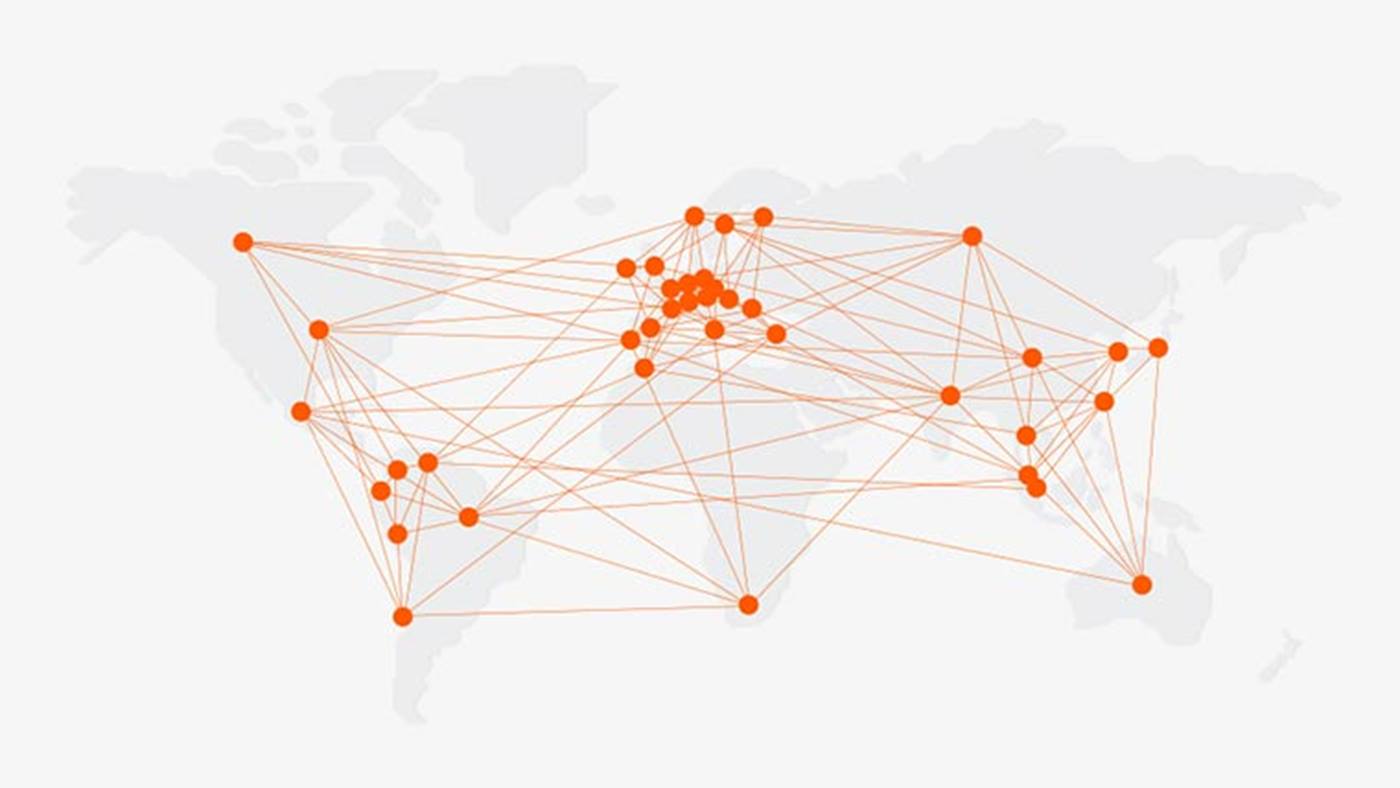The Airbus flagship – the A380 – moves seemingly effortlessly through the air. To get the giant aircraft this close to the sky during construction on the ground, flexible and powerful, heavy-duty mobile platforms are used. Thanks to its Mecanum wheels, a KUKA omniMove is able to transport aircraft components weighing up to 90 tonnes around the production hangar in Hamburg with millimeter precision in confined spaces.
The view is breathtaking: the employees at the Airbus production plant in Hamburg move enormous A380 fuselage sections weighing 90 tonnes and measuring 15 meters in length around a building the size of a football stadium. They maneuver the individual parts as if they were Lego bricks on a table. This is made possible by the KUKA omniMove mobile transport platform, a transport vehicle for heavy loads that is equipped with omnidirectional Mecanum wheels.
This wheel design ensures unrestricted maneuverability. In the building in which the A380 is manufactured, Airbus has been operating two of these mobile transport platforms for a year now in order to achieve the desired manufacturing cycle of the fuselage sections as they move along the production line. The platforms can be coupled together for transporting large parts.
Mecanum wheels allow maximum maneuverability in confined spaces
Due to the different work stations and the huge fuselage sections, space in the Airbus hangar is limited. The ability to turn from a standing start is the greatest advantage of the KUKA omniMove. Its unrestricted freedom of movement derives from its omnidirectional Mecanum wheels. These move in every direction and operate with the utmost precision even with a maximum payload of up to 90 tonnes.
Their versatility is due to their very special design: a Mecanum wheel consists of several individual rollers that are each aligned at an angle of 45 degrees relative to the axle. The result is to give the KUKA omniMove fascinating mobility, enabling Airbus to benefit from optimal and efficient utilization of the space available in the production hangar.
Simple handling, speed, safety and long battery life
The other requirements on transport platforms at Airbus have also always been high. The KUKA omniMove meets these requirements very well. It is easy to operate, quick to learn and particularly easy to steer. Furthermore, the batteries are very powerful: the KUKA omniMove operates tirelessly for 48 hours without the need for recharging. The ease of handling, flexibility and precision of the KUKA omniMove have greatly impressed the team at Airbus that operates the platforms.
Further automation potential in aircraft production
“We currently have eleven production plants in Europe and our supply chain spans the globe,” says Dr. Kai Brüggemann, Airbus plant manager in Hamburg. Many different aircraft types in various assembly stages and test phases pass through the Hamburg production facility which is the size of a town and stretches down to the River Elbe in Finkenwerder.
Parts are moved in and out of the production systems around the clock. Logistics and the transport of parts in the different stages of assembly have thus become a major part of the manufacturing process. Use of the KUKA omniMove platforms is therefore seen as merely the start of production automation at Airbus.
Implementing state-of-the-art technologies in production
The success of Airbus is based on innovation and the implementation of state-of-the-art technologies in production. “We also look for suitable solutions in other branches of industry, particularly the automotive sector.” Dr. Brüggemann is convinced that his company can adopt many solutions from the automotive industry at Airbus production plants: “Here in Hamburg we have a production line that is in constant motion and that is unique in the field of aerospace technology.”
As early as the start of next year, Airbus will be implementing a further fully automated production line for a new aircraft model. KUKA is a partner of the consortium that is supplying this new solution for the future. “It is time for automated robotic processes to make their way into the aerospace sector. We shall be closing this gap between ourselves and the automotive industry relatively quickly,” forecasts Dr. Brüggemann.



